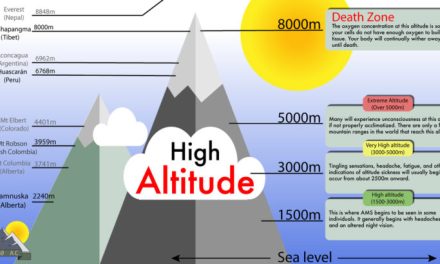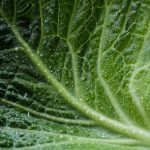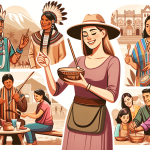So, you’re planning an African safari and you want to capture those breathtaking wildlife moments on camera? Well, look no further! In this article, we’ve gathered the top wildlife photography tips that will help you make the most out of your adventure. From mastering the art of patience to understanding animal behavior, we’ll show you how to get those jaw-dropping shots that will make your friends green with envy. Get ready to unleash your inner David Attenborough and embark on a journey of a lifetime!
Choosing the Right Equipment
When it comes to wildlife photography, investing in a good quality camera is essential. Look for a camera that has a fast autofocus system and a high megapixel count to capture the finest details of the animals. A camera with a high ISO range will also come in handy for shooting in low light conditions, which is often the case during dawn and dusk.
In addition to a high-quality camera body, it’s also important to consider the lenses you choose. Zoom lenses provide versatility in capturing both close-up shots and wider scenes. They allow you to quickly adjust your focal length to adapt to different situations. A telephoto lens is particularly useful for photographing animals from a distance without disturbing them.
Carrying a sturdy tripod is crucial for achieving sharp images, especially when using longer lenses. Wildlife photography often requires patience, and having a tripod allows you to steady your camera and wait for the perfect moment to capture the animal in action. Look for a tripod that is lightweight yet sturdy enough to support the weight of your camera and lens.
Lastly, make sure to pack extra batteries and memory cards. Running out of battery or storage space in the middle of a wildlife sighting can be frustrating and you don’t want to miss any amazing shots. It’s always better to be over-prepared and have backups readily available.
Researching Wildlife Behavior
Before heading out on your African safari, it’s essential to research and study the behavior of the animals you want to photograph. Understanding their habits, such as feeding and mating, will help you predict their movements and increase your chances of capturing unique moments. Learn about their territorial behaviors as well to ensure your safety and the animals’ well-being.
There are numerous resources available, including books, documentaries, and online articles, that provide valuable information about different animal species. Take the time to familiarize yourself with their traits, habitats, and the type of environments they thrive in. This knowledge will not only help you find the right locations to photograph but also enable you to anticipate their behavior and capture compelling images.
Mastering Wildlife Photography Techniques
To excel in wildlife photography, practice patience and observation skills. Animals can be unpredictable, and it’s important to have the ability to wait for the perfect moment. Patience is key to capturing unique behaviors and interactions that tell a story through your photographs.
Using the rule of thirds for composition can greatly enhance the visual impact of your images. Instead of placing the subject in the center of the frame, imagine a grid dividing the image into nine equal parts, and position your subject along these lines or at their intersections. This creates a more dynamic composition and draws the viewer’s eye to the subject.
Experiment with different angles and perspectives to showcase the animal in a unique way. Get down to the animal’s eye level to create a more intimate connection with the viewer. Shooting from a low angle can make the animal appear more powerful and dominant, while shooting from above can emphasize their vulnerability.
Capturing the essence of the animal’s personality is what sets apart a great wildlife photograph. Pay attention to their expressions and body language, and strive to convey their individuality and character through your images. Look for moments when the animal’s personality shines through, whether it’s a playful interaction, a fierce gaze, or a tender moment between family members.
Understanding Light and Exposure
The right lighting can make or break a wildlife photograph. Shoot during the golden hours, which are the first and last hours of sunlight in a day. The warm, soft light during these times adds a beautiful glow to your images and brings out the natural colors of the animals and their surroundings.
Avoid harsh midday lighting, as it tends to create strong shadows and wash out colors. Instead, use this time to take a break or focus on other activities such as editing or scouting for new locations. If you do find yourself shooting in harsh midday light, look for shaded areas or use a diffuser to soften the light.
Using backlighting is an excellent technique to create stunning silhouettes and add a sense of depth to your images. Position yourself so that the animal is between you and the light source, and expose for the brighter background. This technique works particularly well during sunrise or sunset, when the warm colors of the sky create a beautiful backdrop.
Adjusting the exposure settings based on the lighting conditions is crucial to ensuring properly exposed images. Aim to have a good balance between the highlights and shadows, and make use of the histogram on your camera to guide you. If the scene is too bright, decrease the exposure compensation, and if it’s too dark, increase it. Don’t be afraid to experiment and bracket your shots to capture different exposure levels.
Getting Closer to Wildlife Safely
Respecting the animals’ space and habitats is of utmost importance. They are wild creatures and should be observed without causing any distress or harm. Keep a safe distance and use binoculars or long lenses to photograph them without invading their personal space.
Camouflage can be a useful tool to blend in with the surroundings and minimize your presence. Wear neutral colors that match the environment, avoid wearing strong scents, and move slowly and cautiously. The goal is to become a part of the environment and not disrupt the natural behavior of the animals.
Approach the animals slowly and quietly. Sudden movements and loud noises can startle them, causing unnecessary stress and potentially dangerous situations. Be mindful of your actions and always prioritize the well-being of the wildlife over getting the perfect shot.
Utilizing Depth of Field and Focus
Experimenting with shallow depth of field can help create a blurred background, drawing attention to the subject and separating it from the surroundings. This technique is particularly effective when photographing animals in dense vegetation or cluttered environments. Use a wide aperture (small f-stop number) to achieve a shallow depth of field.
Using a fast shutter speed is essential in wildlife photography to freeze the animal’s motion and capture sharp, detailed images. Animals are constantly on the move, and a slow shutter speed can result in blurry images. Increase your ISO and use a fast shutter speed to ensure sharpness, especially when photographing animals in action.
The eyes of an animal can be incredibly captivating. Focusing on the animal’s eyes ensures that they are sharp and allows the viewer to connect with the subject on a deeper level. Use single-point autofocus or autofocus tracking to lock in on the eyes and keep them in focus, even as the animal moves.
For precise control over focus, consider using manual focus. This can be particularly useful when shooting through vegetation or in situations where the autofocus system may struggle to lock onto the desired subject. Take your time to carefully focus on the animal and make adjustments as needed.
Capturing Action and Wildlife Behavior
Wildlife photography is all about capturing the decisive moments and showcasing the animals’ behavior. Be ready to react quickly and have your camera settings dialed in. Sudden movements and interactions between animals can happen in an instant, so be prepared to press the shutter button at any given moment.
Using burst mode can significantly increase your chances of capturing a series of images in quick succession. This mode allows you to shoot multiple frames per second, increasing the likelihood of getting that perfect shot. Burst mode is particularly useful when photographing animals in action, such as running, hunting, or playing.
Anticipating the animals’ behavior is key to capturing those decisive moments. The more you study and understand their habits, the better prepared you will be to predict their actions. Pay attention to their body language, movements, and interactions with their surroundings. This knowledge will allow you to position yourself in the right place at the right time to capture unique and interesting behaviors.
Animals have their own personalities and quirks, just like humans. Look for those unique and interesting behaviors that make the animal stand out. It could be a playful interaction between family members, a predator stalking its prey, or a bird performing an intricate courtship dance. These moments add depth and storytelling to your images.
Composition and Framing Techniques
Composition plays a vital role in wildlife photography. Use leading lines, such as a branch or a river, to guide the viewer’s eye towards the subject. Leading lines add a sense of depth and dimension to your images, creating a more dynamic composition.
Framing the subject within the natural surroundings can create a more aesthetically pleasing image. Look for natural frames, such as tree branches, rocks, or foliage, to frame the animal and draw attention to it. This technique adds context and tells a story about the animal’s environment.
Experimenting with different perspectives and angles can yield interesting results. Instead of always shooting from eye level, try getting down low or shooting from a higher vantage point. These different perspectives can provide a unique and fresh viewpoint, making your images stand out from the crowd.
Including other elements in the frame can help create a sense of scale and provide context. If photographing a large animal, such as an elephant or a giraffe, include other objects or animals to give the viewer a better understanding of the animal’s size. This adds visual interest and can enhance the overall impact of your image.
Editing and Post-processing
Organizing and backing up your photos regularly is crucial to ensure that your hard work is protected. Create a system for naming and organizing your files that works for you. Backup your images to multiple storage devices or cloud platforms to prevent the loss of your precious memories.
Editing software can be a powerful tool to enhance colors, sharpness, and overall image quality. Use software like Adobe Lightroom or Photoshop to make adjustments such as adjusting exposure, contrast, and saturation. However, it’s important to maintain the natural look and feel of the wildlife. Avoid over-editing and strive for a balance between enhancing the image and preserving its authenticity.
Cropping and adjusting the composition can help improve the overall impact of your image. Look for distractions or unnecessary elements that can be removed to draw more attention to the subject. Experiment with different cropping ratios and compositions to find the one that best showcases the animal and its behavior.
Ultimately, the goal of post-processing is to enhance your images without drastically altering them. Strive to represent the wildlife accurately and respectfully. Remember, it’s all about capturing the beauty and awe-inspiring moments of the animal kingdom.
Respecting Wildlife Ethics
As wildlife photographers, it is our responsibility to respect and protect the animals and their natural habitats. Do not disturb or interfere with their behavior in any way. Observe from a distance and give them the space they need to move, hunt, or interact with their environment.
Do not bait or lure animals for the sake of getting better photographs. This can disrupt their natural behavior and potentially harm them and their ecosystems. Let the animals go about their lives undisturbed, and seek out natural interactions and behaviors to capture through your lens.
National parks and wildlife reserves often have guidelines and regulations in place to protect both the animals and the ecosystems. Familiarize yourself with these rules and follow them diligently. The regulations are in place for a reason, and by respecting them, you contribute to the conservation efforts and the long-term preservation of these incredible animals.
In addition to following guidelines, it is important to educate and raise awareness about wildlife conservation. Use your photographs to tell stories and advocate for protecting wildlife and their habitats. Share your knowledge and experiences with others, and encourage them to appreciate and respect the natural world. By spreading the message of conservation, we can all contribute to a brighter future for wildlife.












